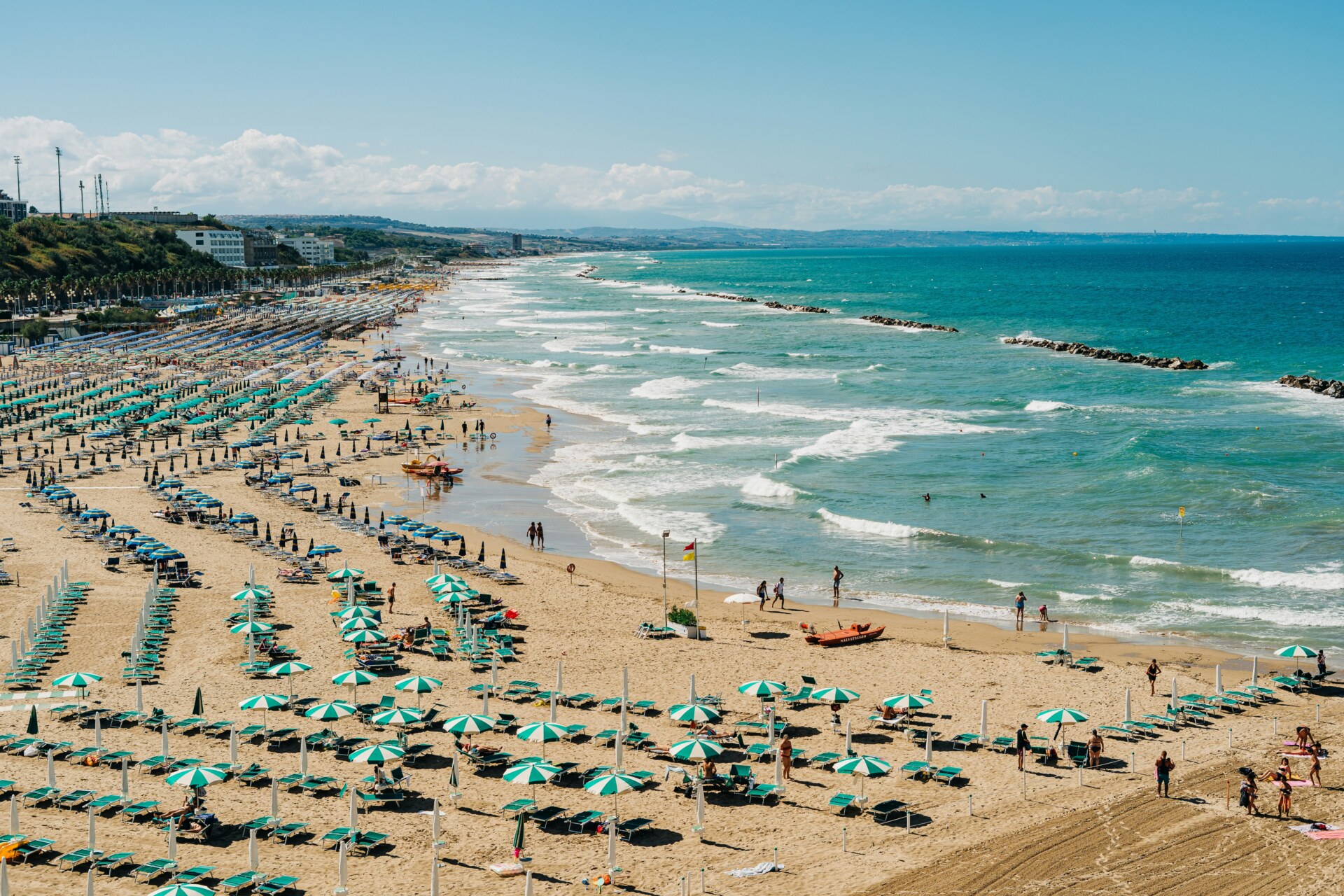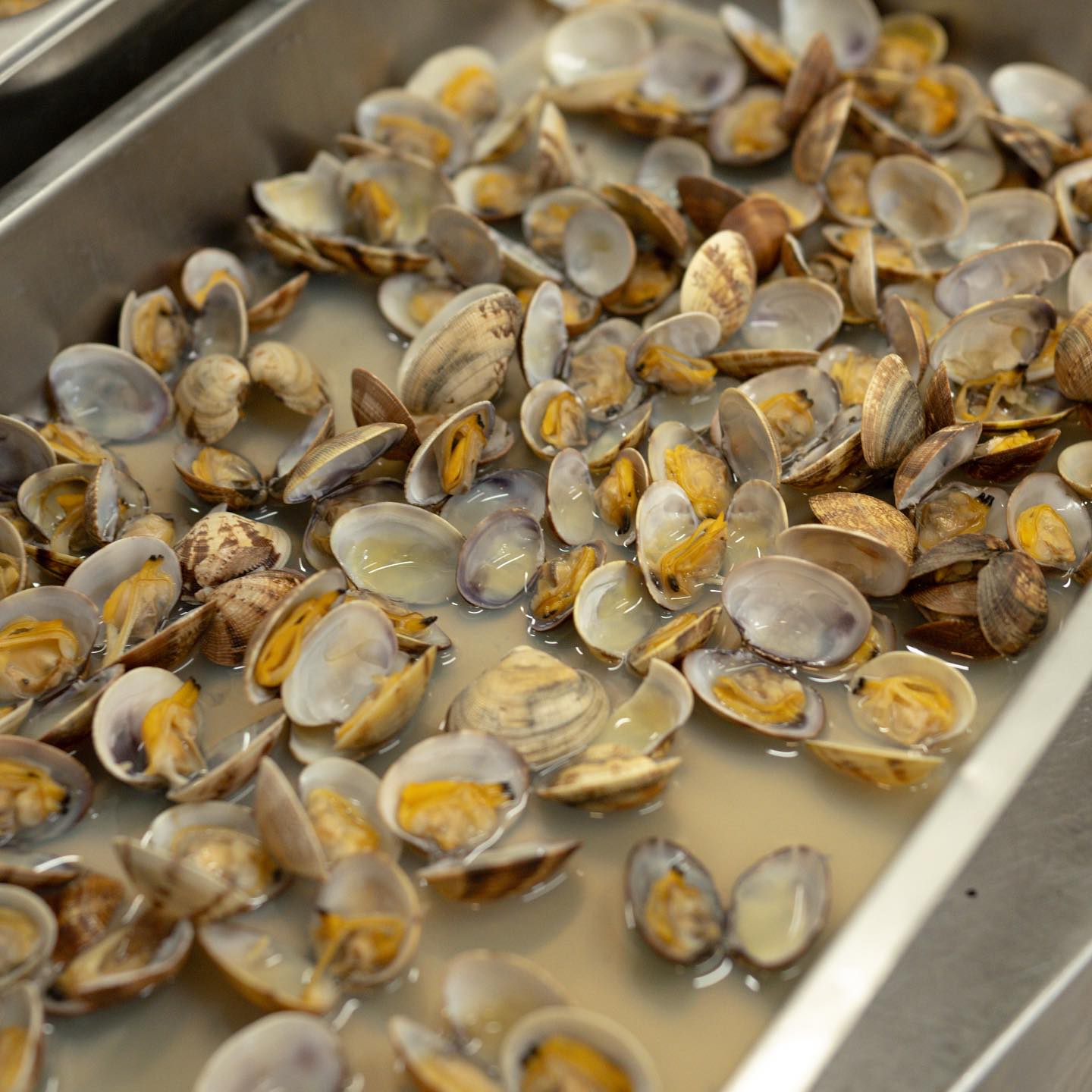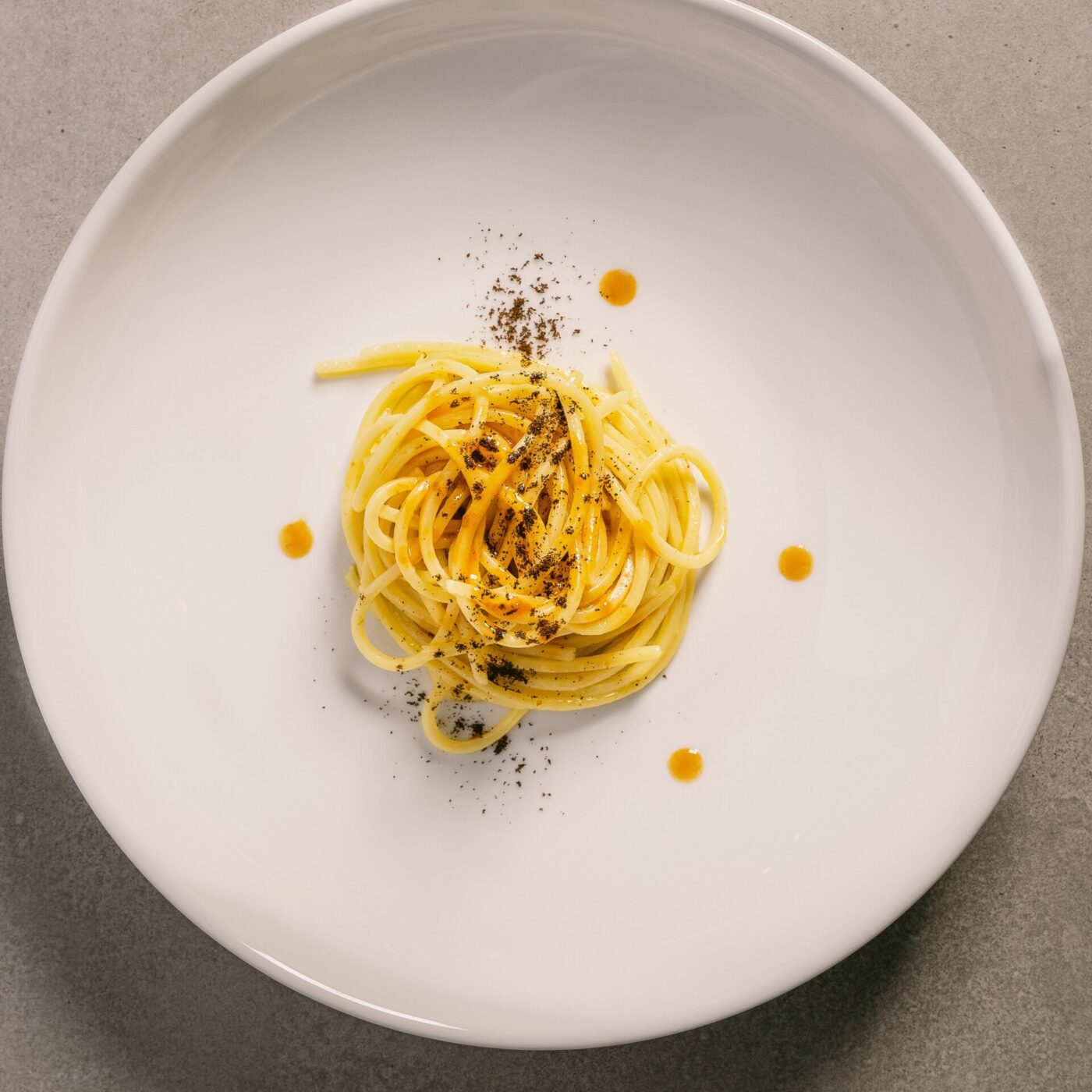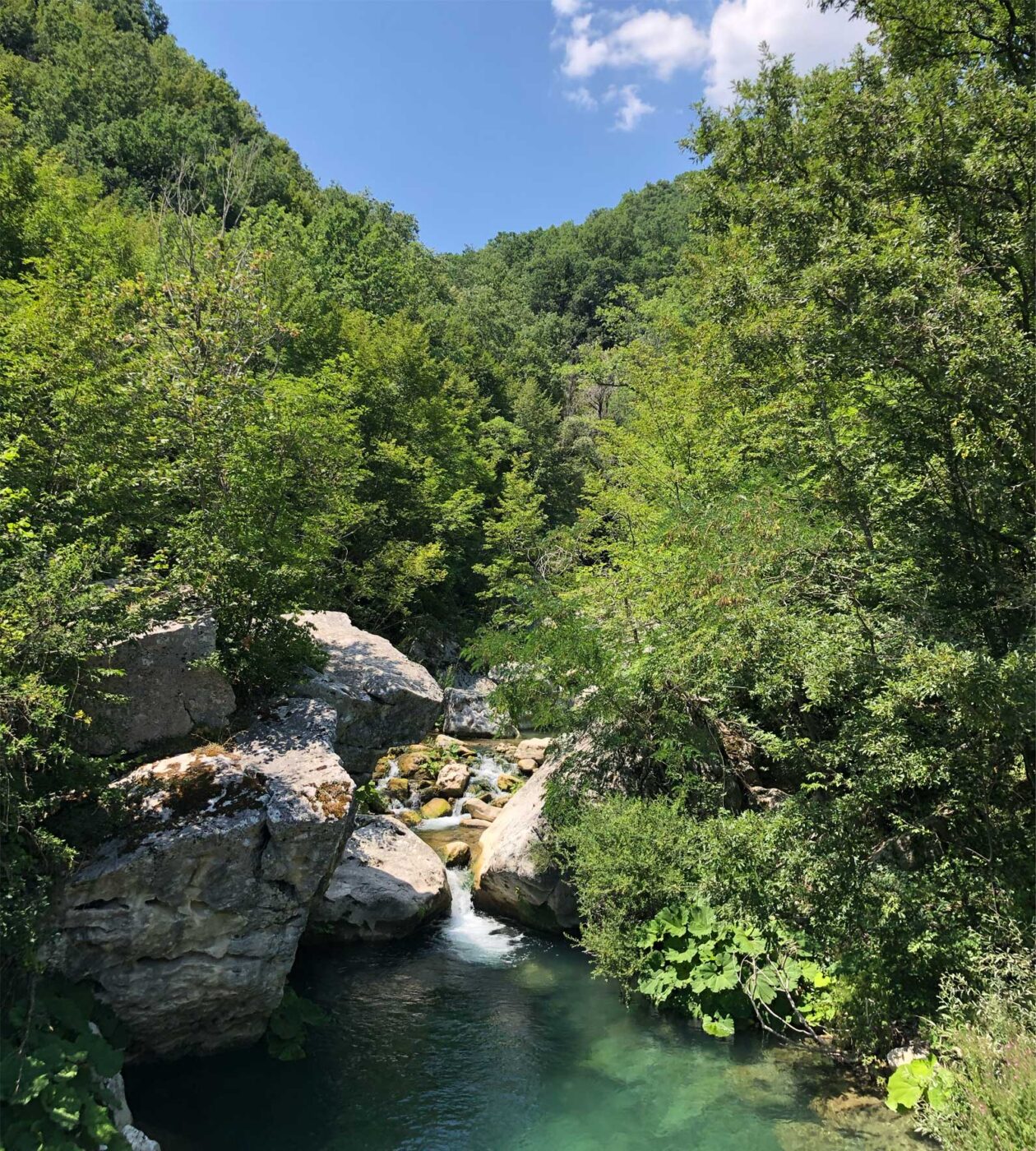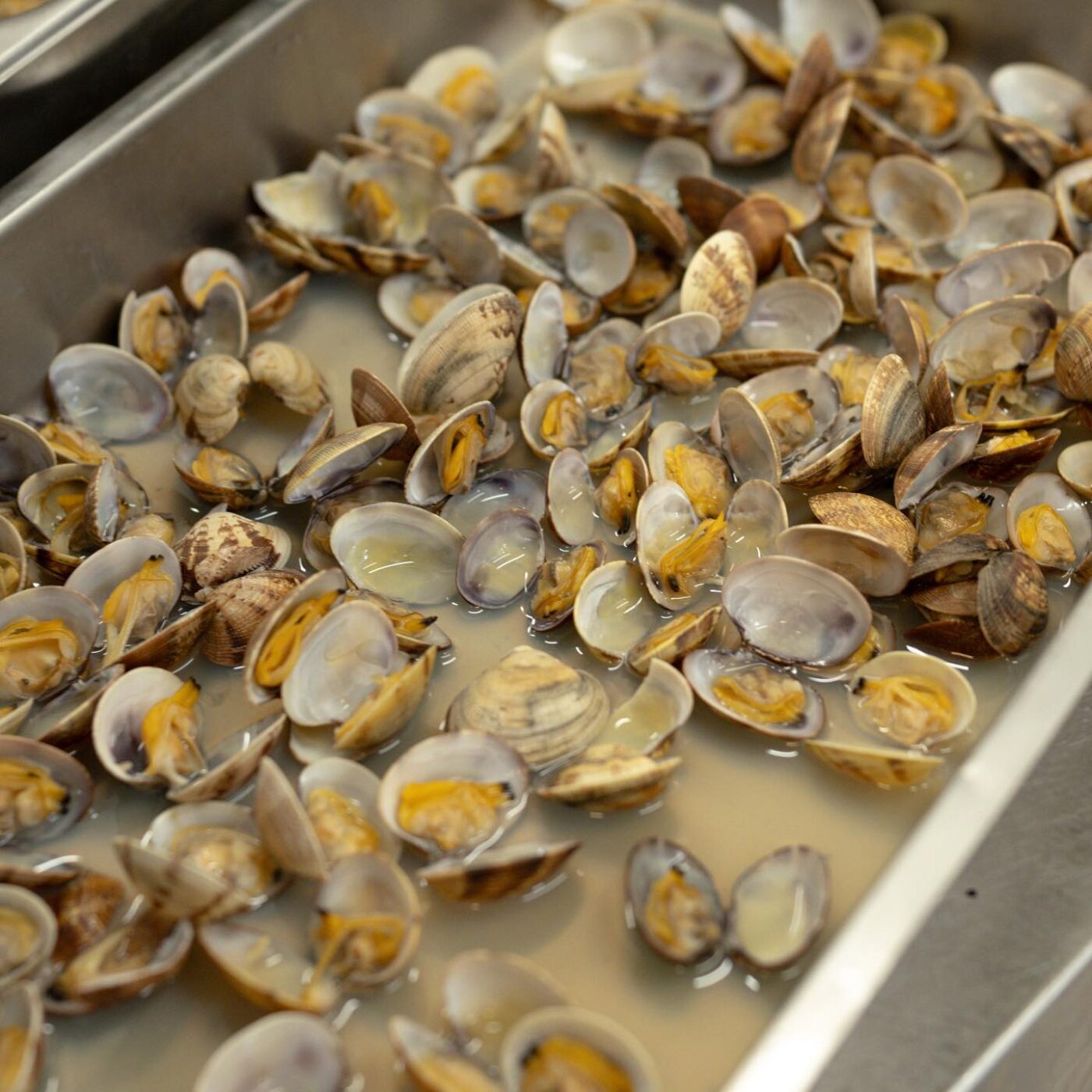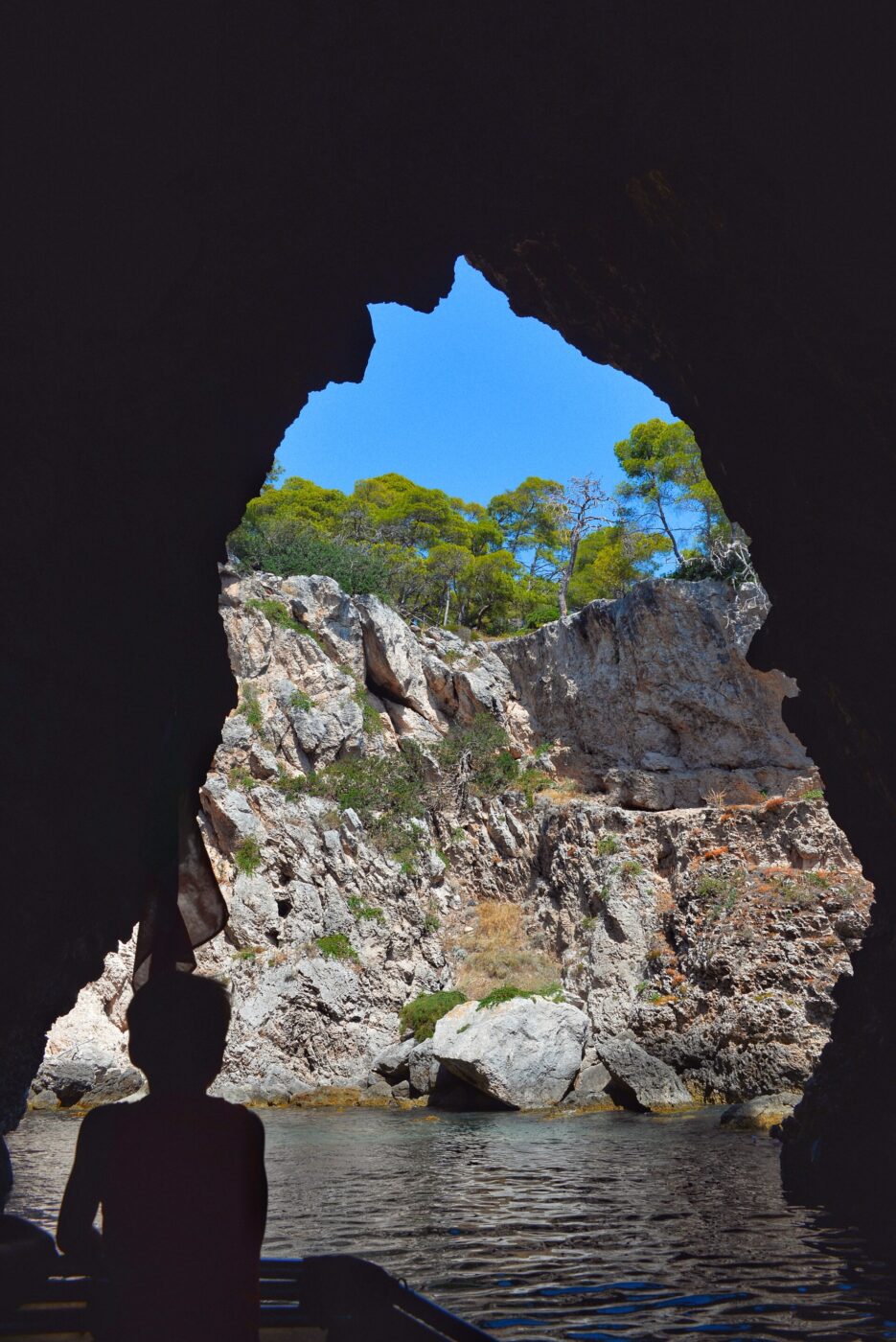There’s an ongoing joke that Molise doesn’t exist; but while that isn’t the case, it is, perhaps, the most secret region in Italy. Clocking in at only 4,438 square kilometres, it’s the second smallest region (Valle d’Aosta holds first place at 3,263 square kilometres), a unique microcosm where you can have breakfast in snow-covered mountains and dive into the crystal clear sea by lunchtime. And the region’s 35 kilometers of coastline, I assure you, are worth at least double.
Nestled between Puglia, Campania, Lazio, and Abruzzo–which it was part of until 1963–nature here is truly unspoiled; the air is pure, colors and flavors are rich, and silence alternates with the crash of the ocean. Life in this little corner of peace and serenity is indeed good, with living (and visiting!) costs that are reasonable… albeit roads that are a bit unwelcoming. Molise is one of the few places in Italy where gentrification and five-star, White Lotus-esque hotels haven’t yet taken hold, even though the region boasts its fair share of Michelin restaurants and fine accommodations, and even claims the title as the home of Italy’s finest truffle. Many experts consider the Molise truffles among the best in Italy, if not in the world, due to the region’s rich soil, ideal climate, long-standing tradition of truffle harvesting and processing, and, let’s face it, total lack of overexploitation; curious truffle hunters should certainly think about heading south.
Admittedly, it can get a bit boring; “nothing ever happens” is a common saying here, but sometimes that’s just fine. I was born and raised in Molise until I was 18; at that age, I couldn’t wait to leave–Molise didn’t seem like a place worth staying for. But over time, I started to see it differently, and I longed for the quiet, the colors, the scents, the unshaken authenticity–every small act of resistance against sameness. Beautiful Molise is the kind of love you fight with as a teenager, but always come back to because it never really leaves you.
So, here is my local’s guide on where to eat, drink, and sleep and what to do in Molise, best traversed by car over at least four days; a word of warning, for if you stay at least seven days, you might never want to leave!
WHERE TO EAT IN MOLISE
La Grotta da Concetta (Campobasso) – A true Molisan gem, this trattoria, run by the family of Mrs. Concetta, has been serving up tradition for over 50 years. Must-tries include the pizza e minestra (a local dish of stale corn bread with sautéed wild herbs), oven-baked baccalà arracanato (cod with oregano, tomatoes, olives, and nuts), and the indulgent funnategl—a hearty mix of tomato, sausage, red peppers, and sunny-side-up eggs. Come hungry.
Zi Peppino (Termoli) – In the heart of Termoli’s historic center, this restaurant has some of the best fish in the region, served in innovative ways. The high-quality ingredients are handpicked by the chef, and portions here are generous. The tables in the small courtyard are especially cozy, and you can’t miss the zuppa de pesce à la Zì Peppino.
Locanda Mammi (Agnone) – Boasting a Michelin star, this surprising spot is under the expert direction of Chef Stefania Di Pasquo–protégé of Niko Romito–who crafts innovative dishes using top-notch, 0km ingredients. With a few different tasting menus, ranging from €170 to €300 pp, you can get a real taste of the region, especially with something sommelier Tomas picks from their well-curated cellar. I love sitting in the indoor/outdoor room with giant windows offering great views. Don’t miss the dessert of rice with milk and cinnamon–it’s one of the few dishes I truly enjoyed as a child (thanks, Grandpa!).
Eredi Palazzo (Campobasso) – In the heart of the historic center of Campobasso, make sure to stop at this panificio for the best pizza al taglio in Molise. Duck in through the beads hanging in the doorway and grab a slice (or four!) of both of the pizza rosso and pizza con patate, the former with an extra crispy base that contrast beautifully with the softness of the tomato. Round it out with a beer, and you’ve got the perfect pre-exploring fuel.
Nonna Rosa (Campomarino) – At Nonna Rosa, the delightful menu evokes the aromas and flavors of a Molisan nonna’s table. From cozy ravioli con noci or tagliolini con zucchini to all different cuts of wood-fired meat sold by the etto (100 grams), the menu has something for everyone. Don’t miss the antipasto misto, a selection of meats, cheeses, veggies, and grilled bread for a true tour de Molise. Owner Giuseppe is as great an entertainer as a chef, and he’ll certainly have won your hearts and your stomachs over by the time you leave.
Miseria e Nobiltà (Campobasso) – With a funky name meaning “Poverty and nobility”, this restaurant continues to reinvent itself, featuring the classic Molisan cucina povera dishes elevated ever so slightly. With yellow checkered floors and previous nods from Michelin, this place is sure to redefine your idea of comfort food. Don’t miss the crioli alla Tintilia made with cabbage, guanciale, chestnuts, and a delightful caciocavallo fondue.
Emozioni (Campobasso) – This Michelin restaurant in Molise’s capital has fair prices and exceptional ingredients, led by Chef Angelo Pagano. Fish is the star ingredient on the à la carte and tasting menus, transformed into dreamy creations like scallops with vanilla potatoes and sea asparagus or risotto with buffalo butter, red prawns, and matcha. The vibe is relatively casual, though the surreal flavors and care with which Chef Angelo treats his catches are anything but.
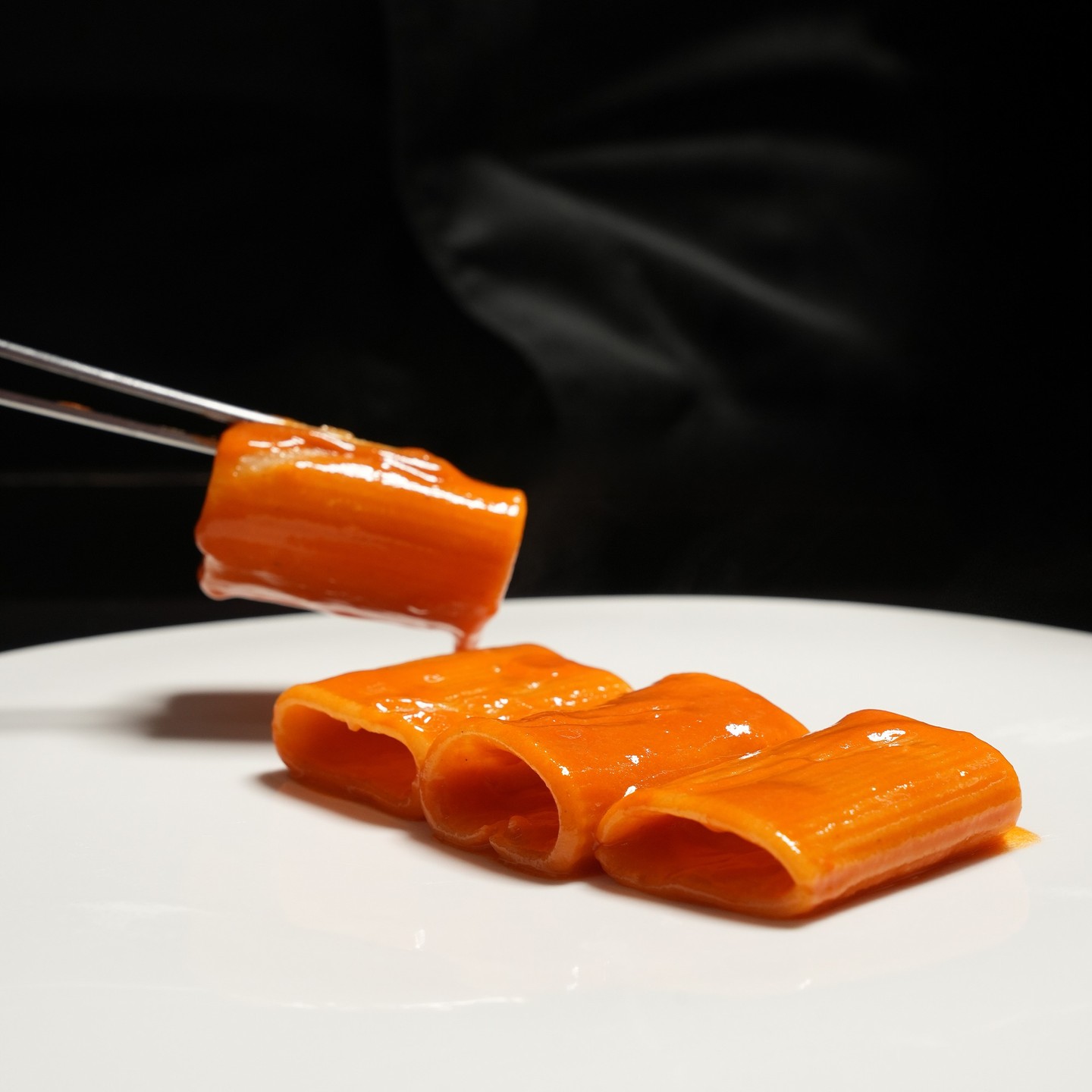
Paccheri allo Scoglio...fujuto, Katsuobushi; Courtesy of Emozioni
Da Adriano (Carovilli) – In the heart of Alto Molise, this old-school trattoria has black and white checkered tablecloths, minimal decor, and a surprising menu. The dishes are pretty simple, but everything is spectacular, from the grilled meats (which fill the restaurant with a great aroma) to the truffle-infused pasta dishes. If you’re looking to rub elbows with some Molise locals, this is the spot to be.
Vecchio Granaio (Vastogirardi) – Set deep within one of Molise’s forests, this secluded, cozy restaurant feels like you’re transported to another place. With all the charm of a mountain cabin, the “old granary” has wooden walls, cushioned booths, and a menu of typical high-altitude cuisine. Everything is exceptional, but don’t miss anything with mushrooms, truffles, and/or cheese. Whether you’re sitting outside on a sunny day or snuggling up inside as snow falls outside, this is one place you won’t want to miss.
Baita Gallinola (Campitello Matese) – If you’re up for an unforgettable adventure, hop on an ATV and head to this restaurant in the middle of winter, as snow blankets the surrounding area and a large fire crackles in the fireplace. Step inside and you’ll immediately feel transported back in time to old mountain taverns. Here, you can dine on a typical menu from Alto Molise, meaning truffles, cured meats, incredible cheeses, and roasted meats. It’s also nice in the summer when you can sit outdoors, but there’s just something unparalleled about a visit in the winter.
Conrasto (Cercemaggiore) – A surprising gem in one of the typical little villages of the Molisan countryside, this place offers an astonishing selection of dishes by Chef Lucio Testa. The cuisine is both simple and sophisticated at the same time, with humble ingredients presented in high-brow ways, and you can choose between à la carte options or the tasting menu. Don’t miss the rice with fava beans and fresh cheese or the pigeon.
Risorta Locanda del Castello (Civita di Bojano) – Run by the legendary Signore Renato, this minimally decorated restaurant has big wooden tables, checkered tablecloths, a stone fireplace, a welcoming atmosphere, and a delightful cuisine that mixes tradition and originality. You’ll find local produce transforming simple pastas and meat, like the capon with veggies or the porcini with peaches, and there’s plenty of truffle to go around.
Sottovento (Termoli) – Located right on the water in Termoli, this is as beautiful a place to have dinner as it is delicious. Antonio Luciani works with a remarkably young team to offer an incredible experience from aperitivo to late into the night, but the best moment to come is sunset. Expect Mediterranean cuisine featuring the catch of the day and an impressively extensive wine list.
ECCO (Termoli) – After a day of diving and lounging on the beach, this is the best place for aperitivo in Termoli, with Molisan-inspired tapas and incredible drinks. Try their Pink Mule–a cocktail with vodka, cucumber, lime, and pink soda–with a saucy shrimp roll, or tiny empanadas and guacamole with the MMMargarita, made of Espolon Blanco, lime, and citrusy Oleo saccharum. You can also pop in for a great breakfast of orange juice and fresh maritozzi and other pastries.
WHERE TO DRINK IN MOLISE
Di Majo Norante (Campomarino) – A mandatory stop for the finest wine in the region. The di Majo Norante family has been making wine here since the 19th century, with three total vineyards of only 123 hectares total. I highly recommend a visit to the winery–especially the vineyards–with insane vistas and the chance to sample some of their labels. You’re definitely going to want to buy a few bottles to bring back with you.
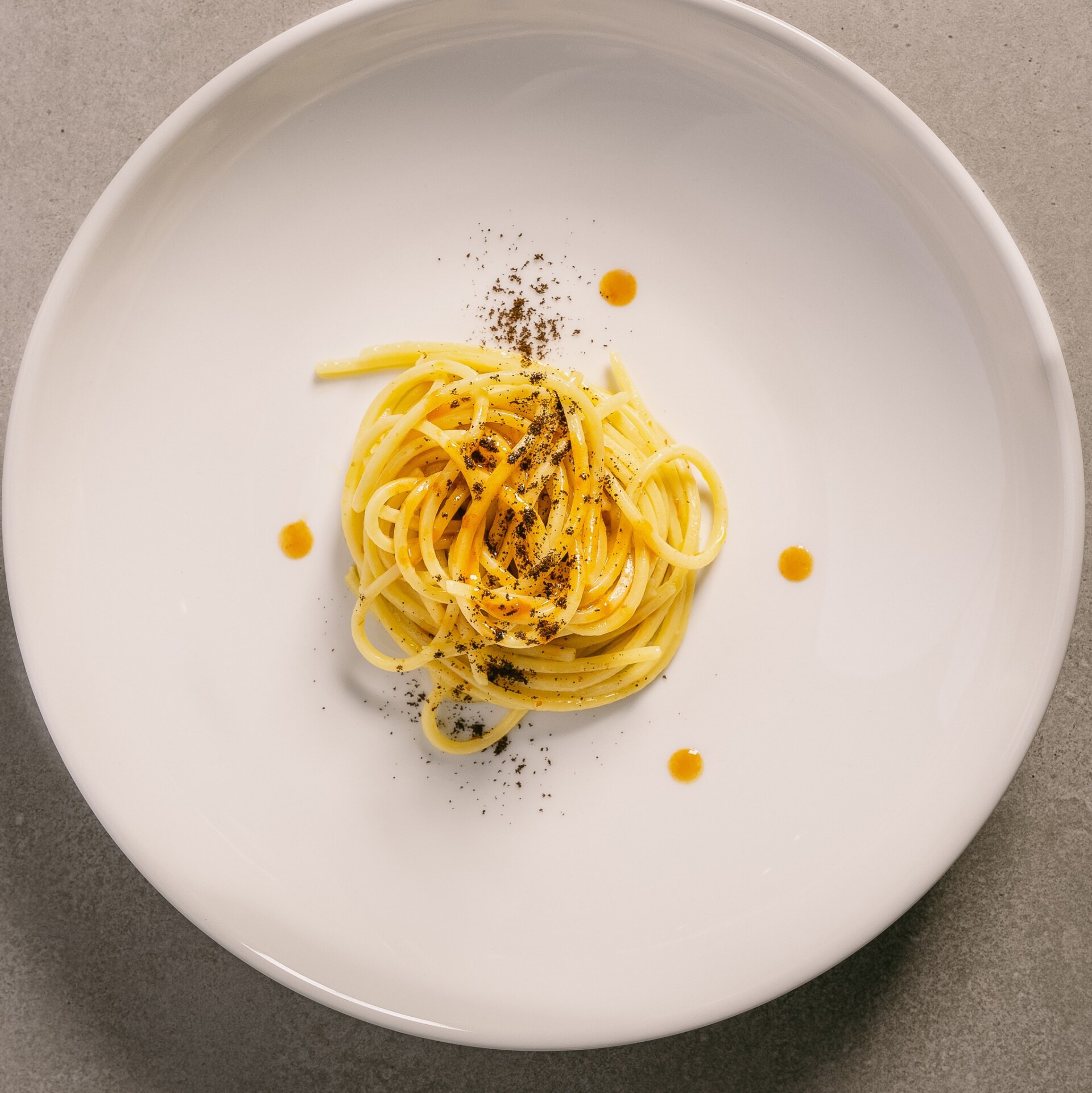
Square spaghetti with sea urchin and coffee powder; Courtesy of @sottovento_termoli
WHAT TO DO IN MOLISE
Castello Pignatelli (Monteroduni) – The castle’s strategic location atop a hill was initially fortified by the Lombards to defend against Saracen invasions, and today, it dominates the village and entire valley of the Volturno River. Under the Pignatelli family, the castle evolved into a Renaissance-style noble residence, and significant renovations followed in the early 18th century. The most striking area, the great hall, features a remarkable wooden ceiling composed of 190 hand-painted oak panels, showcasing intricate tempera artwork. If you’re lucky, you’ll catch the Eddy Lang Jazz Festival, bringing some rhythm and blues to the historic setting.
Cascate di Carpinone (Carpinone) – These waterfalls are straight out of a fantasy film. There are two main waterfalls along the rushing river, the Carpino waterfall and the Schioppo waterfall, and both cascade violently some 10 meters down into clear blue pools below. You can begin the enchanting 5.3 kilometer (3.3 mile) round-trip hike to the cascate in the center of the town of Carpinone, which also boasts an impressive, uninhabited castle. Through lush forests and with some of the cleanest air in the province, this trail is considered moderately challenging, but majorly worth it.
Borgo Antico di Termoli (Termoli) – Perched right atop a small promontory overlooking the Adriatic Sea, this FAI-protected town is a must visit. Inside the fortified citadel, you can stroll through tiny piazze and charming alleys, including the narrowest street in Europe. Though it’s likely been around since the 6th century BC, it looks as if the town were created as a movie set. Don’t miss a pizza at Diez–just like the Borgo, it leaves quite the impression.
Santuario di Pietrabbondante (Pietrabbondante) – Due to its sheer size, this sanctuary is considered to be the most significant architectural testament to Samnite spirituality and worship. The oldest temple dates back to the 5th and 4th centuries B.C., later remodeled in the 3rd century. But it’s the theater, built in the late 2nd century B.C., that truly captivates, built into the ground and overlooking the vast countryside in the distance. Under the oversight of the highest magistrates, this architectural complex has hosted both sacred ceremonies and public events and, today, is open Tuesday-Sunday for ticketed entry.
L’Oasi WWF Guardiaregia (Campochiaro) – This vast regional reserve includes (and protects) the Quirino torrent canyon, the 100-meter San Nicola waterfall, and the Pozzo della Neve and Cul di Bove caves—among the deepest chasms in Europe. Covering 3,135 hectares, it is one of the largest and wildest oases managed by WWF. Keep your eyes peeled for the endemic Spectacled Salamander, rare sightings like wolves, golden eagles, the lanner falcon, and about 340 species of butterflies. Open year round except major holidays and Mondays.
Go rock climbing – The cliffs of Colle dell’Orso and Inclinonda offer two incredible rock faces, true paradises for both beginner and seasoned climbers. The former is located in Frosolone, while the latter is closer to Castel San Vincenzo. They offer stunning views at the top, but be sure you have the right equipment.
Lago di Castel San Vincenzo (Isernia) – If you’ve climbed the Inclinonda cliff, then a dip in the 61.40-square-kilometer, blue-green Lago di Castel San Vincenzo is the perfect reward. It’s one of the most magical natural spots in the area, with clear waters, refreshing air, and plenty of beachfront to sunbathe. If you’re up for the adventure, then hop in a canoe or sailboat and spend the day traversing and fishing its waters.
Cascate del Verrino (Agnone) – We’re big fans of freshwater here, and this is Molise’s best. Take a refreshing plunge for a true session of cryotherapy in this stunning series of waterfalls in the green heart of the Agnone area. You can spend a day hiking along the river and waterfalls, and the landscape around it is filled with beautiful willows and all types of massive trees.
Isole Tremiti – Even though these islands are technically in Puglia, they definitely feel much closer to Molise. In any case, it’s well worth a trip to what I believe are the most peaceful and enchanting islands in the entire peninsula. They offer a serene escape that perfectly complements the vibrant spirit of the mainland–not to mention the insanely blue water.
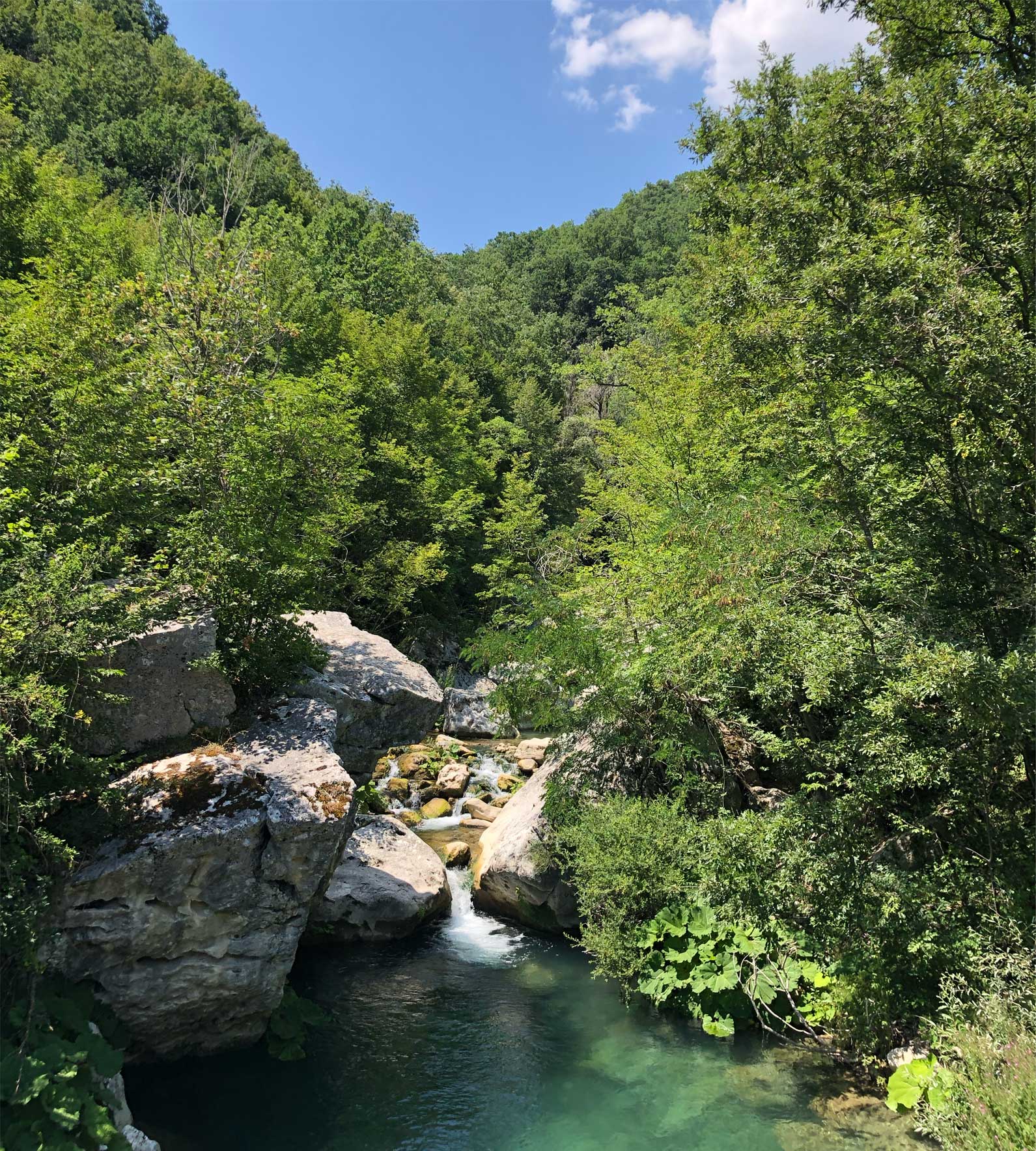
Cascate di Carpinone
CAN’T MISS SAGRE IN MOLISE
Sagra dei Misteri (Campobasso) – Every year on the Corpus Domini, this parade of “living pictures,” a blend of the sacred and the profane, turns the town into something magical. Groups of sturdy young men carry floats through the town, which each hold a “mystery machine”: steel structures that actually support young children and adults. Thanks to illusionist innovation, the characters in the allegoric images appear to be flying. When the tradition started in the mid-1700s, there were 24 of these “mystery machines”, and today, the remaining thirteen can be viewed at the Mystery Museum during non-festival times.
Festa del Grano (Jelsi) – According to tradition, the Wheat Festival in Jelsi began in 1805, following the earthquake of July 26th, when the community thanked Saint Anne for her protection. Since then, on that day every year, the statue of Saint Anne is paraded through town as the patrons ask for protection from earthquakes and future calamities through offerings of wheat. Colorful carts, known as traglie, adorned with ears and grains of wheat, take to the streets for three days of pure celebration.
WHERE TO SLEEP IN MOLISE
L’Ulivo Bianco (Montenero di Bisaccia) – Tucked away from the touristy beaches on the Adriatic coast near Montenero, this establishment feels less like a hotel and more like a cherished family home. Surrounded by olive trees and countryside, the estate only has four mini-apartments and rooms, meaning you’re guaranteed peace and tranquility at all hours of the day. Spend your days lounging by the pool or at the family’s lido, at the beach only a 10-minute drive away.
Casa Mavàl (Montenero di Bisaccia) – With a stunning pool and breathtaking sea views, this countryside retreat perfectly blends countryside charm and shimmering coastline. The white house and olive trees evoke images of a Pugliese masseria, and two spacious rooms can accommodate up to six guests total. Prep all your meals in a stunning renovated kitchen, and enjoy them al fresco on the large table on the terrace. You’ll be hard-pressed to leave the private pool and lounge area.
Casa Colonna (San Martino in Pensils) – Nestled among the gently rolling hills of San Martino in Pensilis, Marina Colonna’s country house is a hidden gem. Surrounded by a vibrant tapestry of sunflower, wheat, and tomato fields, it lies in the heart of ancient olive groves that have been yielding exquisite, estate-bottled extra virgin olive oil for generations; you can book a tasting with your stay. The apartment features two bedrooms and a modern kitchen that looks out onto an herb- and flower-filled garden.
Dimora del Prete (Venafro) – If you’ve ever wanted to spend the night in a historic Italian palazzo, this is the place for you. Constructed in 1860, this Residenza d’Epoca is located in the center of the historic town of Venafro, and it looks just about the same as it did back then, furnished with antique furniture and walls finished in San Leucio silk. There are six different rooms to choose from, and you can unwind in a luxurious sauna after exploring the elegant courtyards, balconies, and grounds as if they were your own.
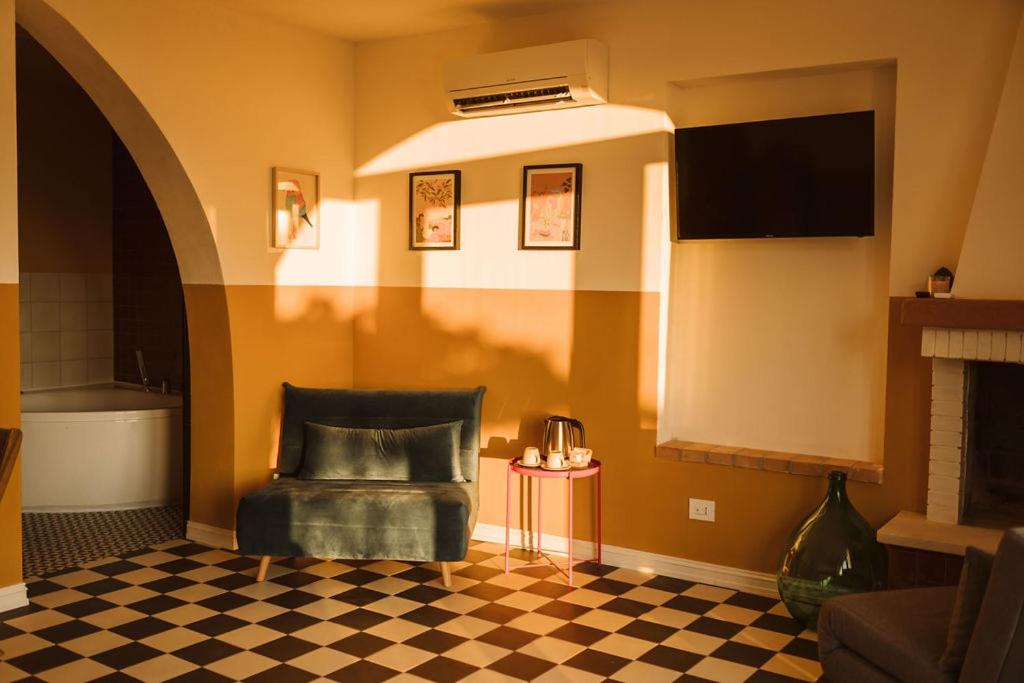
Courtesy of Casa Mavàl
